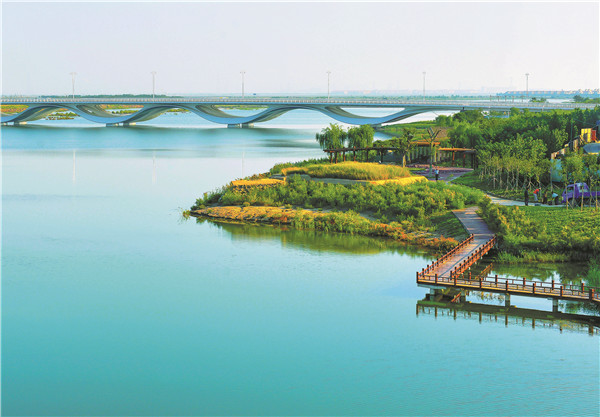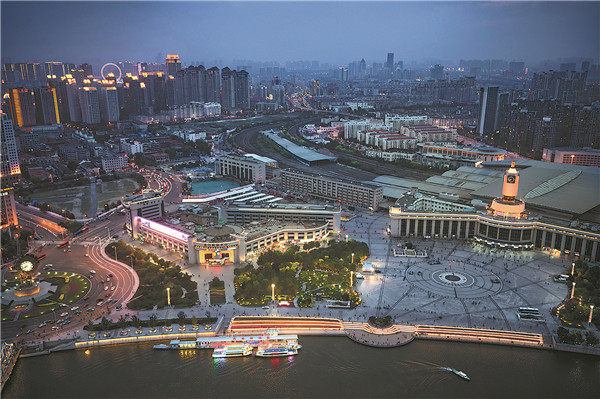Eco-city smartens up its act by integrating latest high tech
(chinadaily.com.cn)| Updated : 2019-04-23
Print Print
A wetland at China-Singapore Tianjin Eco-City. [Photo/China Daily]
From getting real-time traffic information on displays in an elevator, shopping at unmanned supermarkets and finding books in the library with the help of robots, people are enjoying an easier and more convenient life at China-Singapore Tianjin Eco-City.
The eco-city, located in Tianjin's Binhai New Area, which held its groundbreaking ceremony in 2008, is an intergovernmental project between China and Singapore. It is designed to strengthen environmental protection, conserve resources and build a harmonious society.
The project is also committed to building itself into a pilot intelligent city in the country by 2020, featuring the use of new technologies and advanced management systems, according to the eco-city's administrative committee.
A crucial part of the construction is to break the "data barrier", the committee said.
In doing so, the eco-city has built a unified platform for communication networks, public data centers and video monitoring centers, to realize the sharing and integrated utilization of related data.
Based on the platform, further optimization and integration is planned for the existing data resources to set up an intelligent operation and management center that can monitor, analyze and schedule the city's operations in real time.
When completed, the center will be able to simultaneously run 42 management systems and collect hundreds of millions of data points from 11 aspects of city operation, covering governance, transportation, security, energy and environment, by accessing the information systems of government departments and business units in the eco-city.

A wetland under preservation in Tianjin prohibits tourism activities. [Photo/China Daily]

Tianjin Railway Station has a history of more than 130 years. [Photo/China Daily]
The eco-city is also improving the connectivity of infrastructural facilities. So far, more than 1,200 cameras have been installed across the area to serve 15 government departments, including urban patrol, public security and traffic enforcement. The number will increase to 5,000 and new cameras will cover places such as businesses and residential buildings, shopping malls, parks and streets corners.
In addition to cameras, the infrastructure connection center plans to use drones to facilitate data collection and access to sensor networks of the eco-city's hydrology, geology, vegetation, buildings and energy sectors.
To better analyze the results, a data and information platform will be upgraded to realize real-time sharing and three-dimensional visualization processing and application.
The eco-city will build related monitoring stations for government departments and agencies, with unified construction and management, and provide cybersecurity protection and maintenance services.
The data and information platform currently has 490 million data resources shared by six departments related to construction, environment and urban patrol.
Another priority of constructing an intelligent city is to develop more internet applications to connect local residents with intelligent facilities and systems via smartphones and other mobile terminals.
Since transportation is an important part in people's daily lives, the eco-city plans to promote the deep integration of traffic control and information technologies such as big data, internet, cloud computing and artificial intelligence to make traveling "smarter" and more convenient.
In May, it will also test run three unmanned buses, which will be equipped with intelligent driving systems having functions such as visual perception, data integration, high-precision positioning and multilevel planning and decision-making.
The buses will run along a preprogrammed route with a length of about 2.5 kilometers at a speed of 15 kilometers to 20 km per hour.